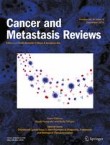
Abstract
The name of the oncogene, ras, has its origin in studies of murine leukemia viruses in the 1960s by Jenny Harvey (H-ras) and by Werner Kirsten (K-ras) which, at high doses, produced sarcomas in rats. Transforming retroviruses were isolated, and its oncogene was named ras after rat sarcoma. From 1979, cellular ras sequences with transforming properties were identified by transfection of tumor DNA initially by Robert Weinberg from rodent tumors, and the isolation of homologous oncogenes from human tumors soon followed, including HRAS and KRAS, and a new member of the family named NRAS. I review these discoveries, placing emphasis on the pioneering research of Christopher Marshall and Alan Hall, who subsequently made immense contributions to our understanding of the functions of RAS and related small GTPases to signal transduction pathways, cell structure, and the behavior of normal a nd malignant cells.



Δεν υπάρχουν σχόλια:
Δημοσίευση σχολίου
Σημείωση: Μόνο ένα μέλος αυτού του ιστολογίου μπορεί να αναρτήσει σχόλιο.